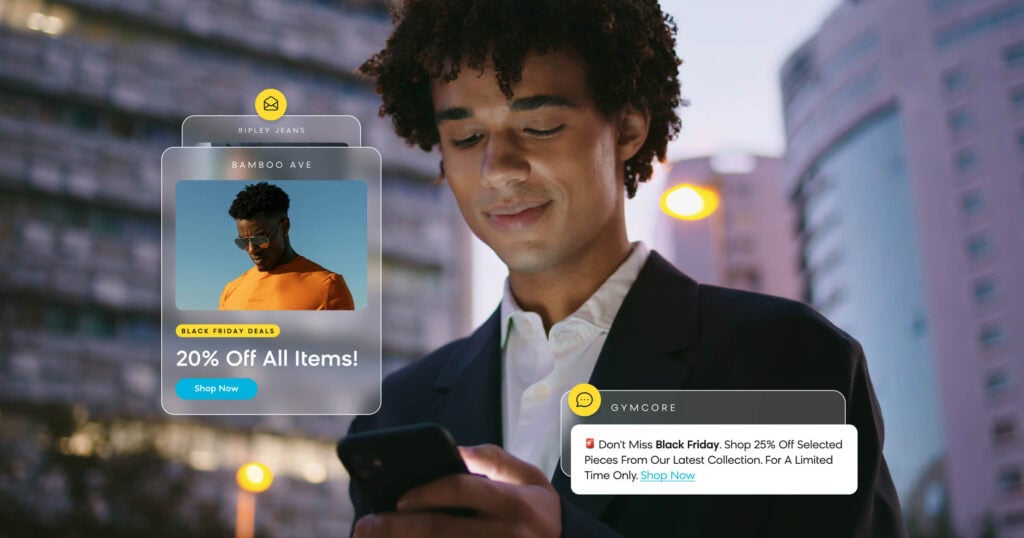Introduction
Ecommerce merchandising is a crucial aspect of online retail. It refers to the presentation and arrangement of products in an ecommerce store to drive sales and improve the customer experience. An effective ecommerce merchandising strategy can help online shoppers find what they’re looking for quickly and easily and can increase average order value. In contrast, poor or ineffective ecommerce merchandising can put off potential customers and harm conversion rates.
Visual merchandising is an important part of online merchandising and involves creating an attractive and engaging ecommerce site that is easy to navigate. Online shoppers are often overwhelmed with choice, so making your ecommerce store and website visually appealing and accessible can help to retain their attention and encourage them to browse and buy.
One of the most important elements of successful ecommerce merchandising is the use of customer data and product data. Google Analytics and other analytics tools can provide valuable insights into customer behavior and preferences, which can help ecommerce stores personalize the online shopping experience and create effective ecommerce merchandising strategies.
When it comes to online merchandising, the search bar can be a powerful tool to drive sales. Providing customers with a quick and simple way to find the products they’re looking for during online shopping can help them to make more purchases.
Is your online store struggling with ecommerce merchandising? If so, keep reading, as we’ll discuss proven ecommerce merchandising strategies and what is an effective ecommerce merchandising strategy, so your ecommerce site can improve the customer experience and drive sales. We’ll dive deep into the techniques and tools used to optimize ecommerce sites and create visually engaging experiences for customers. Additionally, we’ll explore the importance of commerce data in ecommerce merchandising, as well as how to utilize search bars and optimize your website for mobile devices.
By implementing these ecommerce merchandising strategies and making your ecommerce store and website attractive and accessible, you can increase traffic, conversions, and overall revenue. But there’s one more very important point to consider here — the 80/20 rule.
If you put in 20% effort, left 80% to automation, and got significant results, would you be satisfied with the outcome? We’re sure most business leaders and innovators would say “yes.” That’s why the 80/20 rule — otherwise known as the “Pareto Principle” or “The Law of the Vital Few” — has become so popular in the business world. In a nutshell, the 80/20 rule states that roughly 80% of consequences (outputs) come from 20% of causes (inputs), meaning a small percentage of inputs should have powerful outcomes.
As a creative and energized department, marketing has dozens of activities going on at once to move the needle on its annual targets. Quarterly campaigns, paid ads, speaking and networking engagements, virtual and in-person events, and relevant and engaging content — the list goes on and on. But your ecommerce team needs to concentrate on what actually works, especially during peak season when we’ve seen a 40% year-over-year (YoY) increase in ecommerce sales.
Why is the 80/20 rule helpful — not only during peak season, but also as we near a possible global recession and customer sentiment continues to fall amid surging inflation? With the 80/20 rule, you can better identify which initiatives to prioritize, so your team can make the most impact on your business in these tough times, and of course, during peak season.
In this guide, Bloomreach will dive further into the 80/20 rule and how it can be applied to a merchandiser’s demanding workload to prioritize the objectives that require a manual touch and optimize the rest. As the glue of any ecommerce company, the merchandiser’s influence across the organization shouldn’t be limited by time, budget, or team structure — and AI and automation are here to help.
The Role of the Modern Merchandiser
The modern merchandiser is not a role to be taken for granted. For many commerce businesses, this powerful player in your marketing department often sits on the ecommerce team. Unlike the visual merchandiser, their daily workflows — and the obstacles that come along with them — are way more technical than one would initially imagine and tend to snowball during peak season. Because of the role’s evolution, merchandisers tend to wear many hats, including:
Content Creator
Creating ecommerce landing pages is a common marketing tactic to target shoppers with a clear objective in mind. Typically, there will be personalized content on these landing pages based on audience segment or an even more granular buyer persona. Then, the pages will be bookended with a straightforward call to action (CTA) to move the customer or buyer along their purchase journey. Nowadays, merchandisers are responsible for building the content to disclose product details, establishing trust with prospects and returning customers, and making it easier for the shopper or buyer to make a purchase — all while taking the strain off small and overloaded content marketing departments.
Personalization Expert
Even though consumers support data privacy and protection, shoppers and buyers still want personalized experiences — and they expect marketers to give it to them. For merchandisers, personalization tactics can be implemented through landing page content, site search results, product recommendations, and more. Yet, one person (or even a small team) can’t manage all these data points at scale. This is an obstacle many merchandisers are now facing in a hot market with tons of competition, high consumer standards, and low loyalty.
Site Experience Designer
North America saw a 69% rise in online traffic since the onset of the pandemic, while the United Kingdom observed an 81% spike. As online shopping skyrocketed, the importance of a great user interface and user experience (UI/UX) became more pressing because shoppers are likely to leave a site if it’s unattractive, slow to load, or difficult to navigate. So, the question became: How do you properly optimize UX and get the customer to where you want them to go? While UI/UX is a crucial strategy for any serious ecommerce company, merchandisers are now expected to contribute to these “good” online experiences, in addition to strategies around navigation, promotions, and even the homepage. But it’s been a challenge for those who don’t come from technical backgrounds, to say the least.
A/B Test Specialist
Consumer preferences, sentiment, and demand can change in mere moments. Not only can A/B testing improve the customer experience by helping you understand their ever-changing behavior, but it can also lead to higher click-through conversions, increased revenue, and improved customer loyalty and retention. Similar to any marketing campaign, A/B testing helps merchandisers gauge what’s working versus what isn’t. Just like in brick-and-mortar stores, “shelf space” isn’t anything to be taken for granted online, and your merchandisers need experience running A/B tests to eliminate the products without traction or the strategies that are not proving to be effective.
Merchandiser’s Pain Points That Are Hindering Growth
Every role in your ecommerce company has its pain points. For merchandisers, one of them is juggling multiple roles — all while attempting to hit their key performance indicators (KPIs). Even though merchandisers should focus on finding brand-appropriate products to sell, negotiating volume deals with suppliers, and making the store (both online and offline) an exciting place to be, many small, manual tasks tend to get in the way of these crucial objectives.
Couple these unrelenting expectations with their pain points, and this team is often left feeling overwhelmed. For your ecommerce team — and company — to succeed, merchandisers need leadership to enable the proper resources, specifically during peak season when there isn’t a lot of flexibility. Luckily, there are many tech solutions on the market to address the common issues merchandisers face:
Having Limited Impact
As products, categories, the number of languages, and brand sites continue to increase, merchandisers won’t be able to focus on improving the customer experience and generating revenue. Merchandisers typically make an average of 9 to 13 significant and/or positive return on investment (ROI) decisions in a given month. While this is impressive, it simply isn’t scalable.
Think of it this way — merchandisers are focused on the following KPIs: profitability, conversion rate, average order value (AOV), and revenue per visit (RPV). If optimization remains too manual on ecommerce websites and their corresponding category pages, merchandisers will struggle to keep up with these crucial business metrics. They also might become too reliant on IT for portions of their workflow, further stretching the resources of an already overburdened team.
Coming From Non-analytical Backgrounds
Since merchandisers are known product experts in the company, they need to possess the technical knowledge to do their jobs effectively online. Yet, many merchandisers come from a non-analytical background, making the current demands for online optimization, customization, and personalization more difficult to approach without the tools that they need to succeed.
According to McKinsey, next-generation merchandisers are not the reactive “quarterbacks” they’ve been traditionally described as in the past. Instead of punting around solutions when the fire alarm sounds, they must transition to a proactive internal structure and rely on deep analytics to move forward with their respective strategies and be successful. Even though visual merchandisers deal with analytical situations in brick-and-mortar stores, some of these professionals could naturally shy away from automated tools that breathe life into a digitized, streamlined approach to the craft.
Using an Excess of Manual Tools
Because modern consumers want more than a product catalog hastily uploaded onto your website, a merchandiser’s intention online should be the same as it is in store: leveraging product placement to maximize conversions. This can be achieved through multiple tactics, whether the strategy pertains to pinning specific products to the first spot on a results page or ranking certain items higher near a particular holiday.
When it comes to digital merchandising, businesses often get caught up in manual fixes. By manually making small fixes to the way search results or category pages are displayed, you’ll only create major obstacles for your team down the road. These exceptions can become time-consuming to maintain, and as your product catalog grows and buyer behaviors change, the rules you’ve created will only overlap and contradict each other, leaving your merchandising team feeling confused and overrun.
Being Too Focused on Operations
Based on your merchandiser’s to-do list, it is hard for them to keep tasks in check. Because of this, your customer experience (CX) will eventually begin to suffer — if it isn’t already. But the last thing you want is for your customer or buyer to be left to their own volition, wandering the virtual “aisles” of your ecommerce website and trying to find the product they need.
If your operational approach is the “what” for your business, then your strategic approach is the “how.” By getting caught up in operations — no matter the duration — you’re letting strategy fall by the wayside. Both operations and strategy are extremely important and necessary functions to your business, however. Often, they go hand-in-hand since strong strategic planning informs specifically what your company needs to do and how they need to do it. Without the proper search and merchandising solution, your merchandiser will be overloaded by the what and lose focus on the how.
The 80/20 Rule – and How It Applies to Merchandising
Now that you better understand the plight of the modern merchandiser, it’s time to address how your ecommerce team can approach their multiple dilemmas. Since a merchandiser is expected to be a jack of all trades — even in larger companies — and has various limitations typically impeding their workflows, they need a way to effectively manage and expedite their tasks. It all starts with AI and automation. Before we expand on that point, let’s explore the concept of the 80/20 rule and how it’s carved out a significant space in leading business ideologies.
First, Some Background on Pareto’s 80/20 Rule
Like many good philosophers, Vilfredo Pareto was obsessed with the social sciences: sociology, economics, and political science. His passions led him to make important contributions to society, like popularizing the term “elite” after in-depth studies on income distribution. In fact, he came up with several concepts to analyze income distribution and economic equality, including the “Pareto index” (measuring income inequality), “Ophelimity” (evaluating economic satisfaction), and of course, the “Pareto Principle.”
The idea for the Pareto Principle came from none other than pea plants. One day, Pareto noticed that 80% of the healthy pea pods were generated by only 20% of the pea plants in his garden. Now, how he calculated this exactly can only be left to the legend itself, but the main point of his observation was the notion of uneven distribution. Being very analytical by nature, the philosopher linked his initial thought to wealth distribution in Italy. Soon after, he discovered that 80% of the land in his country was owned by just 20% of the population.
These days, we see the Pareto Principle come up time and again in all corners of civilization, from business management and finance to technology — and yes, even in merchandising.
Applying the 80/20 Rule to Merchandising
To ease the pressure of a merchandiser’s workload, combat their pain points, and support their success during your busiest time of the year, they’ll need the help of AI and automation. Since the 80/20 rule allows people to redirect their efforts to the right places, merchandisers need to take advantage of search and merchandising technology 80% of the time, focusing 20% of their attention on the tasks that require a human touch to drive big results.
By combining informative analytics with irreplaceable human judgment, merchandisers will save time, money, and resources. Not only will they see impactful results, but they’ll also have a solid strategy as a possible recession looms. In other words, they can double down on the activities that need their distinct focus — and automate the rest.
However, your employees might be hesitant — or even resistant — to using automation tools. What if it’s too automated, or what if it isn’t automated enough? There’s typically a “Goldilocks” scenario that occurs where the tool under evaluation is either too manual (requires extra labor) or too automated (disregards human intervention) and lacks the flexibility your merchandisers need to meet their KPIs.
With intelligent search and merchandising technology that can automate redundant tasks, merchandisers will ultimately cut down on the time spent managing day-to-day issues in search, addressing long-tail searches, and fixing synonyms. While any worthy search and merch tool is optimized out of the box, the AI also needs to have the capability to learn from your unique product data, customer data, and manual inputs to become smarter over time. Plus, it should let merchandisers intervene when necessary and tweak algorithms to align with their business goals.
Implement Automated Merchandising Processes That Are Just Right
Despite all the individual and collective challenges in our world today, the show must go on, and business must continue as usual. A search and merchandising solution will lend a helping hand and give your merchandisers a more advanced starting point on the AI maturity curve, which could take a lot of effort for your company to reach on its own accord. Even with an out-of-the-box solution, your team will still have plenty of room to make important decisions.
If your merchandisers are not happy with a page of search results, for example, the ball is in their court. They can create real-time custom rules on top of algorithms, launch custom product rankings, run rule-based recommendations, or conduct tests to make a better product discovery experience for your shoppers or buyers. However, AI will drive 80% of merchandising operations forward without any intervention needed, resulting in meaningful impact without significant (or frustrating) effort.
Here are a few use cases where search and merchandising technology could be used to automate processes for your ecommerce team:
Providing Relevant Recommendations
We’ve all had at least one stellar shopping experience, and it most likely had to do with that extra attention to detail — often known in our industry as personalization. Personalization capabilities within your search and merchandising tool will allow merchandisers to foster meaningful and relevant experiences in an online setting through small upsells. Now, they can more easily recommend additional products or services, trending items, or offerings based on new or previous purchases. However, merchandisers cannot personalize experiences at scale without applying the 80/20 rule and allowing automation to do a significant portion of the work for them.
Creating or Editing Web Pages to Refine UX
With a visual editor, you can easily optimize CX and create or edit web pages that move a prospect or returning customer along their purchase journey. An excellent search and merchandising tool boasts an easy-to-approach interface that will allow your team to revise rankings in product grids, as well as the facet and filter order. With these helpful merchandising features to expedite typically lengthy tasks, your team is focusing less on hours worked and more on outcome or impact, which only reinforces the concept of the 80/20 rule.
Rule Management
Sure, AI and automation should enable your merchandisers to be successful with the right tools and complete 80% of the work. But merchandisers still need the ability to intervene and make strategic decisions based on company targets and changes in the market. A good solution will have rule management where you can boost, bury, pin, or hide products or services in accordance with your strategic plays.
Insights
How can we possibly know the impact that our merchandisers are making without the intelligent insights behind the AI and automation itself? Not only does a data dashboard help your team visualize everything, but a stellar search and merchandising solution will also proactively suggest opportunities for improvements across your site, so you can focus on the changes that need your attention and will optimize conversion rates. Talk about the 80/20 rule encapsulated!
A/B Testing
Any merchandiser wants to experiment with different scenarios, especially once considering user behavior. After all, your team shouldn’t be guessing outcomes; they should be testing them regularly to discern the most effective results for your business. Therefore, A/B testing needs to be a part of the investment you make in your first (or next) search and merchandising tool. A/B testing only exemplifies the power of the 80/20 rule, which helps determine the workflows that simply aren’t hitting the mark or need to be axed completely.
Encourage Merchandisers to Focus on the 20% That Matters Most
While a smart solution will certainly lead the way, it won’t completely do the job for your merchandisers — and that’s the beauty of it. As we said before, the AI of a worthwhile search and merchandising solution comes with a strong foundation for your team to begin optimizing CX immediately. They can act quickly to make key site improvements (or completely pivot) and increase conversions and AOV. Such flexibility is necessary to navigate all the ins and outs of today’s complicated and competitive business landscape.
But there’s still approximately 20% of a merchandiser’s workload that still requires their attention — even with AI and automation. Once a digital search and merchandising solution is implemented to improve the browsability and findability of the products or services on your website, you might be wondering what workflows your merchandisers should focus on to drive growth and boost revenue and ROI.
Marketing and Advertising
Brand building
Product launches
Specialty promotions (upsell, cross-sell, add-ons, etc.)
In-store and Website Experiences
User interface/user experience (UI/UX)
Personalized experiences
Omnichannel strategy
Operations and Logistics
Finding brand-appropriate products
Negotiating volume deals and exclusivities with suppliers
The Success Stories of AI and Automation
Bloomreach has always advocated for putting proof (i.e. numbers) behind our assertions. Since our company is a provider of a powerful search and merchandising tool, we’ve seen the competence of AI and automation at work — and it’s truly something to be marveled at. Not only is our solution applicable to numerous verticals in various markets, but it also proves to be consistent in its results. Focusing on impact over workload, Bloomreach Discovery’s merchandising module illustrates the 80/20 rule’s undeniable efficacy and successful outcomes.
Boden Blazes the Trail for UK Retailers With Digitization
Boden is a British clothing retailer that originally operated as a mail-order business. From these humble beginnings, Boden grew tremendously and now has websites in seven countries, a £300 million annual turnover, and two million customers across the globe — with 98% of sales coming from online. Boden realized that personalizing the customer journey was the key to its future success, but legacy tools that required a lot of work kept them from making the changes that were desperately needed. However, Boden knew that site merchandising was crucial to providing a strong customer experience and decided to implement Bloomreach Discovery.
Since then, the Boden team has become more customer centric and innovative. They’re able to make decisions based on consumer behavior rather than pure guesswork and intuition. Bloomreach’s AI-powered search and merchandising tool eliminates time-consuming, manual work with A/B testing, slot-based merchandising, 1:1 personalization, segmentation, and analytics. Now, Boden’s ecommerce team uses A/B testing to identify which collections resonate with customers and orchestrate a process they call “outfitting,” which offers customers a collection of clothes that pair well together — and both have increased customer engagement and amounted to a significant impact on Boden’s revenue, especially during sale periods and peak season.
Conclusion
In conclusion, successful ecommerce merchandising is an important investment for online retailers. By implementing effective ecommerce merchandising strategies, businesses can create visually engaging ecommerce sites that drive sales, increase customer engagement, and boost average order value. With the increasing use of mobile devices, it’s more important than ever to optimize your ecommerce website for small screens and to create effective landing pages that offer a seamless shopping experience to your customers.
Ecommerce merchandising strategies go beyond the simple placement and arrangement of products in an online store. They involve creating a strong brand identity, using customer data to personalize the shopping experience, and linking ecommerce merchandising with marketing campaigns. By crafting effective online merchandising strategies, businesses can create a unique and engaging online shopping experience that stands out from the competition.
The key to achieving successful ecommerce merchandising is to focus on your customers and use data-driven insights to guide your merchandising strategies. By creating personalized and relevant content, encouraging repeat business, and optimizing your ecommerce site, you can create a shopping experience that engages and delights your customers.
In today’s increasingly competitive digital commerce landscape, merchants must stay on top of ecommerce merchandising strategies to remain competitive. While merchandising strategies may vary depending on the industry, businesses of all sizes can benefit from implementing an effective ecommerce merchandising strategy. By optimizing your online stores and investing in online merchandising strategies, your business can thrive and achieve greater success.
It’s human nature to want to be in control of our own destinies, which can make it difficult to let go. As the reasoning goes, if you have control over a situation or scenario, then you know it’s being done right. For this reason, it has been extremely difficult for many people to accept AI and automation, especially in the workplace.
Unfortunately, this mentality isn’t sustainable for your business. You can’t do everything on your own! Human beings also need time to step away from their workloads and recharge. Otherwise, you’ll sacrifice quality and risk burnout. Let Bloomreach Discovery show your merchandising team the way with capabilities — like boost, bury, pin, or hide — that will enable them to be more successful with AI and automation, and in turn, generate more revenue for your brand, particularly during peak season.
Ready to Dive Into The “20%”?
Check out our blog to double down on the 20% that still needs a merchandiser’s human touch.




